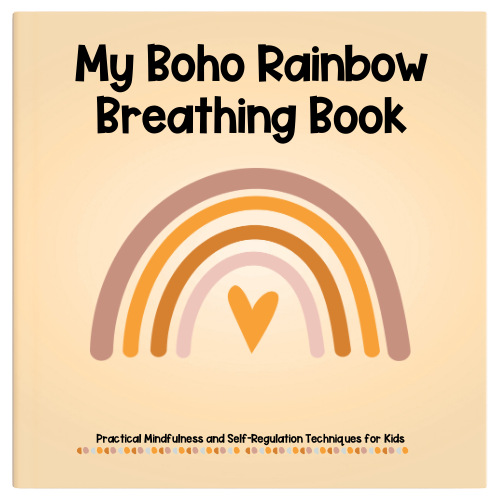***Disclosure: This post contains an Amazon affiliate link that at no additional cost to you, I may earn a small commission when you purchase through the link from my blog. Thank you for your support!
As parents and educators, we constantly seek ways to empower our children to face life’s challenges with confidence and determination. We want them to be resilient, to bounce back from setbacks, and to believe in their potential. But how do we instill these qualities?
From my personal journey, I’ve seen the profound impact of resilience and a growth mindset in achieving my life’s milestones.
In the classroom, I’ve witnessed the pivotal role these concepts play in many children’s academic journey.
And as a parent, my mission is to find the most effective ways to instill these values in my child.
These two concepts, when combined, can be the foundation of resilience. In this post, I’ll share insights from my dual perspective, offering practical strategies to help our children harness the power of both grit and growth mindset.
Table of Content
- What Is Resilience?
- 14 Ways To Cultivate Grit and Growth Mindset
- 7 Activities to Introduce and Develop Grit and Growth Mindset
- The Role of Environment
- Let’s Cultivate the Grid and Growth Mindset In Our Children
What Is Resilience?
According to the American Psychological Association, resilience refers to the ability to bounce back from setbacks, adapt to change, and keep going in the face of adversity. It’s not just about enduring; it’s about growing and thriving amidst challenges.
Grit: The Power of Perseverance
In her book, “Grit: The Power of Passion and Perseverance,” Angela Duckworth defines grit as the combination of passion and perseverance for long-term goals. It’s about staying committed to your goals, even when progress is slow or obstacles seem insurmountable. Sticking to your goals no matter what!
In her research, she found that Grit is a more significant predictor of success than talent or the traditional measures such as IQ. This challenges the conventional wisdom that innate talent is the primary driver of success. How powerful is that?
Growth Mindset: The Belief in Potential
Growth mindset is the concept that came out of Carol Dweck’s research. Growth mindset is the belief that abilities and intelligence can be developed through dedication and hard work. This mindset contrasts with a fixed mindset, where individuals believe their talents are innate gifts. Dweck’s studies in 2012 have shown that those with a growth mindset are more likely to embrace challenges, persist in the face of setbacks, and see effort as a path to mastery.
Check Out Rainbow Mindfulness Books and More!
Interplay of Growth Mindset and Grit
So how do these two concepts overlap? While Dweck and Duckworth have distinct primary research focuses, their findings converge in four major ways:
- Nature of Effort: Both researchers emphasize the importance of effort. For Dweck, believing that effort can enhance ability and intelligence is central to a growth mindset. For Duckworth, sustained effort over time is a component of grit.
- Response to Failure: Both growth mindset and grit emphasize resilience in the face of challenges. Individuals with a growth mindset see setbacks as opportunities for growth, while those with grit persevere even when progress toward a goal is slow or fraught with difficulties.
- Developmental Potential (Growth vs. Fixed): Both Dweck and Duckworth believe that their respective concepts (growth mindset and grit) aren’t fixed traits but can be developed over time. This is particularly significant for educators and coaches looking to cultivate these qualities in students or team members.
- Impact on Achievement: Both growth mindset and grit have been linked to higher achievement and success in various domains. Whether it’s the belief that one can grow (growth mindset) or the determination to persist over the long haul (grit), both qualities are beneficial.
While Carol Dweck’s research on growth mindset and Angela Duckworth’s work on grit have distinct focal points, they both underscore the importance of beliefs, effort, perseverance, and resilience in achieving success. Their combined insights offer a more holistic understanding of the psychological factors that drive achievement and excellence.
For instance, someone with grit but without a growth mindset might persevere but may not believe they can improve or grow from challenges. Conversely, someone with a growth mindset but lacking grit might believe in the potential for growth but give up too quickly when faced with obstacles.
Want to learn more about Carol Dweck’s and Angela Duckworth’s research? You can listen to both of their books for free on audible, if you sign up for a free trial here.
14 Ways To Cultivate Grit and Growth Mindset
5 Ways To Cultivate Grit According to Angela Duckworth:
- Cultivate a Sense of Purpose: Understand the deeper purpose behind what you’re doing. When you see your work as contributing to the greater good or aligning with your core values, you’re more likely to stick with it.
- Practice Deliberately: Focus on the aspects of your performance that need improvement rather than just going through the motions. Deliberate practice involves targeted areas of improvement and seeking feedback.
- Adopt a Long-Term Perspective: Gritty individuals think about their life’s work in terms of years or even decades. They’re committed to their long-term goals.
- Stay Hopeful: Believe that things will get better, especially when faced with setbacks. Hope and optimism play a crucial role in perseverance.
- Surround Yourself with Gritty Individuals: Grit can be influenced by our environment. Being around people who exhibit grit can inspire and motivate you to do the same.
5 Ways To Develop a Growth Mindset According to Carol Dweck:
- Understand the Mindsets: Recognize the difference between a fixed and growth mindset. Awareness is the first step to change.
- See Effort as a Path to Mastery: Understand that effort isn’t just about hard work; it’s about learning, improving, and mastering skills.
- Find Lessons in the Success of Others: Instead of feeling threatened by other people’s success, look for lessons and inspiration from their journeys.
- Use the Word “Yet”: When faced with something you can’t do, add the word “yet.” For instance, “I can’t solve this math problem” becomes “I can’t solve this math problem yet.”
- Stay Curious: Adopt a lifelong learning approach. Always be curious and open to new knowledge and experiences.
4 Ways To Cultivate Grit & Develop a Growth Mindset:
- Embrace Challenges: View obstacles not as roadblocks but as opportunities to grow and learn. This perspective helps in persevering even when things get tough. Instead of avoiding challenges, see them as opportunities to grow.
- Learn from Criticism: Instead of getting defensive or demotivated by criticism, use it as feedback for improvement.
- Learn from Failures: Instead of getting demotivated by failures, analyze them, learn from them, and use them as stepping stones towards your goals.
- Persist in the Face of Setbacks: View setbacks as a natural part of the learning process, not as evidence of unintelligence or failure.
Both Duckworth and Dweck emphasize the importance of effort, perseverance, and a positive attitude towards challenges and failures. By understanding and applying their insights, individuals can cultivate grit and develop a growth mindset, leading to personal and professional growth.

7 Activities to Introduce and Develop Grit and Growth Mindset:
- Goal Setting:
- Set goals with your children. They can be short term or long term goals.
- If you are just starting, you can try setting weekly goals and then break them down into actionable steps.
- Use SMART goals.
- Reflection Journal:
- Start a reflection journal where you encourage your child to note down things that are grit and growth mindset focused.
- Their daily challenges and how they overcame them.
- Mistakes or failures of the day and what they learned from them
- Strategies for future challenges
- Other lessons learned
- Start a reflection journal where you encourage your child to note down things that are grit and growth mindset focused.
- Perseverance Challenges:
- Work on challenging projects together such as a puzzle, building a model and more. Let your child choose based on what they are interested in.
- The most important thing is to make sure that when it gets difficult to encourage your child to stick to completing it even if it takes a long time or doesn’t look perfect. Then if you have started a reflection journal, you can talk about what they learned from completing the project and what they would do differently.
- Fixed vs. Growth Mindset Scenarios:
- Present different scenarios and ask children to identify if they represent a fixed or growth mindset.
- The Power of “Yet”:
- Use the power of “Yet!” Present statements with a fixed mindset, like “I can’t do math.” Then ask your child to transform them using “yet,” e.g., “I can’t do math yet.”
- Use a book like “The Magical Yet” by Angela DeiTerlizzi. You can read about the activity in full detail here.
- Challenge Board:
- Have a board where children can post challenges they are facing.
- In the classroom, you can allow the students that posted about the challenges to talk about what they have been doing to overcome them. Or, allow other students to help out.
- At home, you can also model this by posting your own challenges and talk about how you are working through it, your feelings, and what you are learning from it during family dinner. Allow your children to do the same. It can be a family dinner topic or just a Feedback Friday dinner conversation.
- Growth Mindset Affirmations:
- Introduce affirmations like “Challenges help me grow” or “Feedback is constructive.” Get children used to saying these affirmations to themselves so that when they encounter challenges, it becomes their inner voice.
Want more activities on Growth Mindset? Check out 3 Activities To Introduce Growth Mindset In The Classroom.
The Role of Environment
A supportive environment is crucial. Educators, parents, and leaders play a pivotal role in promoting resilience by encouraging a balance of grit and growth mindset. This includes providing constructive feedback, creating safe spaces for risk-taking, and celebrating effort over innate talent.
Moreover, children learn best through observation so you have to model it! Modeling grit and growth mindset can be quite challenging, but we are here to embrace challenges. Don’t be afraid to be vulnerable and show your struggles. They will learn that it’s alright to struggle and pick yourself back up.
The Power of Praising
What you say to the children also play such an important role in shaping their mindset. Focus on praising their effort instead of the result. Instead of saying phrases like “You are smart,” or “You are so talented!” Point out their efforts instead such as “You have worked so hard on this project and it shows!” or “I love seeing you dedicating time to practice to get better at this skill.” I broke it down some more for you here:
- Praising Effort Over Ability: When we praise effort (“You worked hard on this!”) rather than innate ability (“You’re so smart!”), we encourage a growth mindset. This type of praise reinforces the idea that effort leads to improvement and success, rather than attributing success solely to inherent talent.
- Encouraging Perseverance: Praising persistence and resilience (“I admire how you kept trying even when it got tough”) fosters grit. It underscores the value of sticking with a task or challenge, even when it’s difficult.
- Valuing the Process: Recognizing and praising the process, strategies, focus, perseverance, and improvement can nurture both a growth mindset and grit. It shifts the emphasis from end results to the journey and growth that occurs along the way.
- Avoiding Over-Praise: Offering praise indiscriminately can backfire. It’s essential to provide genuine, specific praise that acknowledges real effort and achievement. Over-praising can lead to complacency or a fear of taking on challenges where one might fail and not receive praise.
Let’s Cultivate the Grid and Growth Mindset In Our Children!
Grit and growth mindset, while powerful individually, become transformative when combined. By understanding and cultivating both, children can build a resilience that not only helps them navigate challenges but also thrive in the face of them.
As parents and educators, our role is to guide and support them on this journey. By fostering a balance of grit and growth mindset, we’re equipping them with a resilience that goes beyond mere endurance. It’s about thriving, evolving, and realizing their fullest potential. Let’s commit to this journey together, nurturing the next generation of resilient, empowered individuals.
Bye for now!
Prima at LittleYellowStar
* * *









